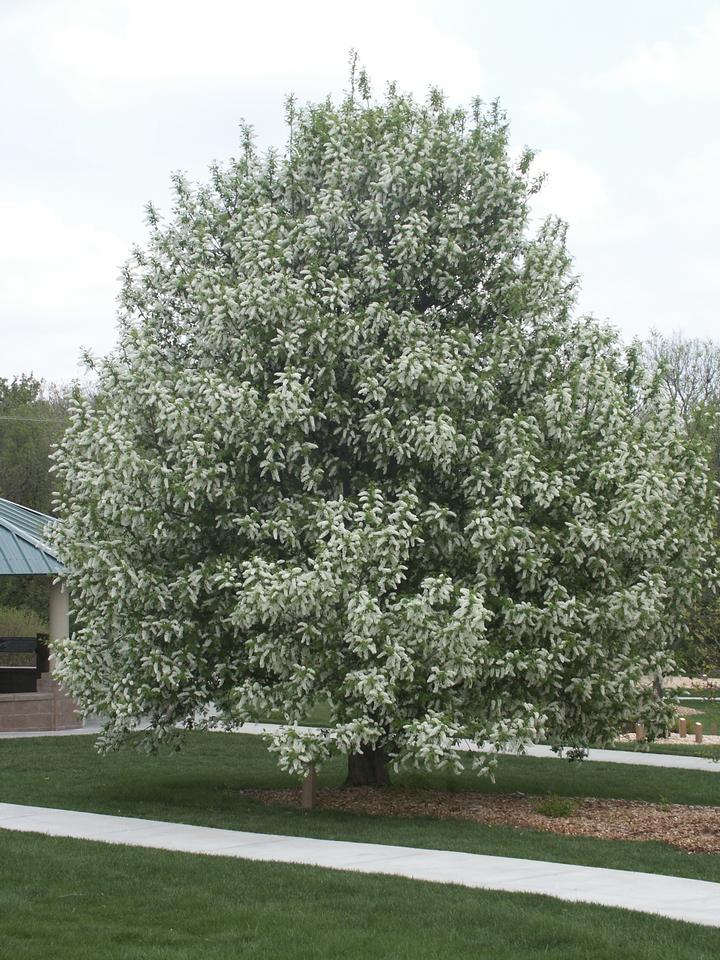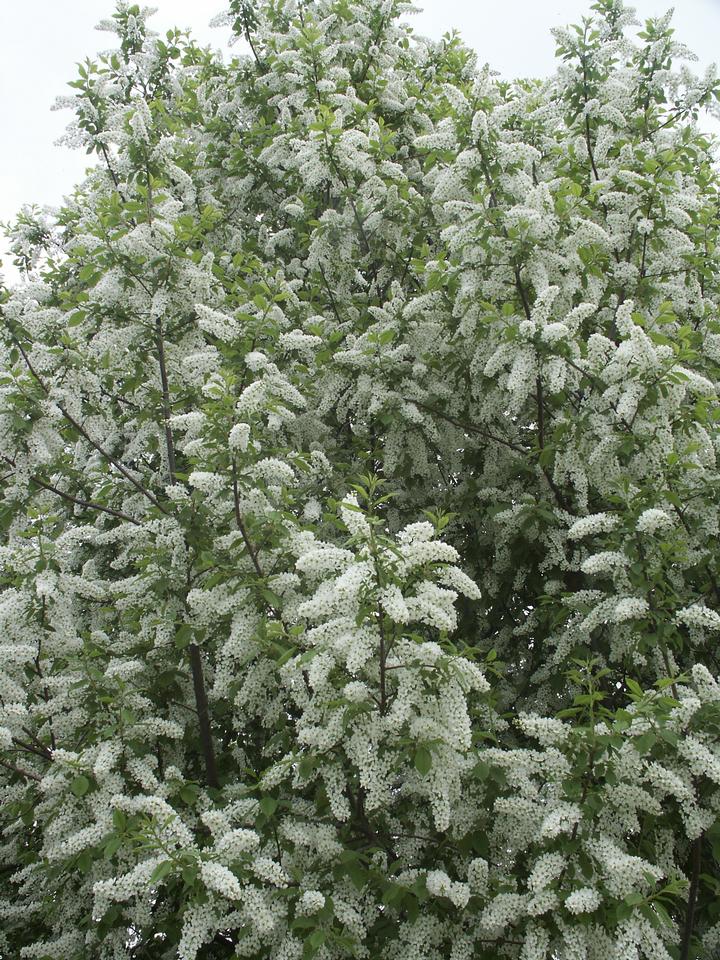Cherry, European Bird, or May Day Tree
Prunus padus
Rosaceae - Rose
Description
Leaves: Alternate; simple; two or more glands or bumps on petiole; deciduous.
Twigs/buds: Twigs medium texture; reddish brown; with prominent lenticels. Buds scaly, red-brown like twig.
Flowers/fruit: Flowers perfect, fragrant, 1/2", white, in elongated, drooping bunches appearing in early May. Fruit is a 1/4" to 1/3" diameter black drupe maturing in mid to late summer.
Bark: Grayish, greenish or dark brown; rough; has dark lenticels.
Wood: Black knot fungus often a problem; causes dark swellings on branches; little information available.
General: Small to medium sized tree, depending on cultivar, native to Europe, Asia, and Japan. Shade intolerant. Weak wood and/or branch structure. Thorns or spines that can be dangerous; use thornless varieties if possible. Fruit and/or plant part can be nuisances; use fruitless varieties if possible.
Landscape Use: Black knot disease is a problem. Various canopy and inflorescence sizes and foliage colors are available. Zones 3(2?)-7.
Cultivars: 'Albertii', 'Berg', 'Colorata', var. commutata Dipp. 'Plena', 'Spaethii', Summer Glow®, 'Watereri'.
Characteristics
General
| Family | Rosaceae - Rose |
|---|---|
| Cultivar Availability | Yes |
| Hardiness Zone | 3-7 |
| Type | Broadleaf |
| Utah Native | No |
Growth
| Growth Rate | Medium |
|---|---|
| Mature Height | Medium |
| Longevity | Medium |
| Is Good Under Power Lines | No |
| Crown Shapes | Irregular |
Ornamental
| Bark | No |
|---|---|
| Fall Color | No |
| Flowers | Yes |
| Foliage | No |
| Fruit | No |
Tolerance
| Shade | Medium |
|---|---|
| Salt | Medium |
| Drought | Medium |
| Poor Drainage | Low |
| Alkalinity | Medium |
| Transplanting | Medium |








